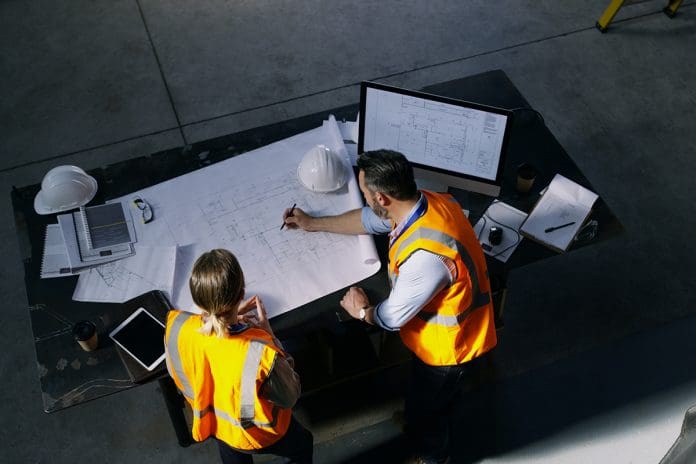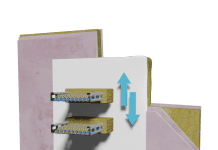In today’s fast-paced construction environment, staying on top of multiple projects and team collaboration is crucial for success. While Building Information Modelling (BIM) has significantly improved the way projects are designed and managed, challenges can still arise without proper coordination
To fully leverage the benefits of BIM, it’s essential to focus on improving coordination and task management, particularly through efficient issue tracking and centralized information management.
The downside of poor BIM coordination
BIM is designed to centralise project data, streamlining communication across teams and stakeholders.
However, if BIM coordination is weak, the process can become chaotic. Have you ever encountered a situation where outdated plans caused unnecessary rework? Or found yourself searching across multiple platforms for important project information? These inefficiencies can lead to delays, errors and project disruptions.
Poor BIM coordination leads to disorganised workflows and confusion, causing project members to act on outdated or conflicting information. The outcome is increased costs, delayed timelines and dissatisfied clients. To avoid these challenges, having the right systems in place to keep your BIM workflows aligned is key.
Issue Tracking: Solving problems before they grow
Managing tasks effectively is essential to keeping projects on track, and a well organised issue-tracking system is a vital part of that process.
Problems are bound to arise on any project, but without a structured method for tracking and resolving them, these issues can multiply, derailing progress.
An efficient issue-tracking system allows teams to log problems as they appear, assign them to the appropriate personnel and monitor the status of resolutions. This not only speeds up the problem-solving process but also helps prevent small issues from turning into significant setbacks.
Solutions like Newforma Konekt embed issue tracking within the BIM framework itself, providing greater visibility into project risks and enabling quick resolutions.
Staying proactive with issue management ensures that delays are minimised and rework is avoided, which improves overall productivity and keeps project milestones on schedule.
Centralised information management: Breaking down silos
One of the most common challenges in construction projects is managing the vast amount of data involved. When critical information is spread acrossemails, shared drives and different software platforms, it becomes difficult to keep track of everything. This disconnection can lead to mistakes, miscommunication and unnecessary project delays.
Centralised information management addresses this problem by bringing all your project data – documents, plans, communications -into one easily accessible location. Tools like Newforma Konekt provide a single platform where all team members can access up-to-date information. This reduces confusion, ensures accuracy and eliminates the time wasted searching for crucial details.
For example, if a team member needs to review a client’s feedback on recent design changes, instead of combing through emails, they can retrieve the necessary information from the centralised system. This not only saves time but also ensures that no important detail is missed, improving decision-making and project efficiency.
Enhancing collaboration across teams
BIM coordination isn’t just about managing internal workflows; it’s also about enhancing collaboration across different teams and stakeholders.
Construction projects often involve architects, engineers, contractors and project managers – all of whom use different tools and software to complete their tasks. Ensuring these teams work in sync is essential for project success.
By adopting BIM tools that promote interoperability, you can streamline collaboration and keep everyone aligned. Platforms that allow for easy sharing of both 2D and 3D models across different software systems improve communication and prevent costly errors. Newforma Konekt’s ability to integrate with other platforms helps teams share real-time data and project models, ensuring that all stakeholders are working from the same playbook.
This seamless collaboration leads to faster decision-making, fewer mistakes and more efficient project delivery, which ultimately benefits both teams and clients.
Elevate your project coordination and task management
In a world where construction timelines are tighter and project complexity continues to rise, ensuring smooth coordination and effective task management is more important than ever. Leveraging BIM tools that prioritise issue tracking and centralised information management can be the difference between a project that runs smoothly and one that faces costly delays.
If you’re looking for ways to enhance collaboration, streamline workflows, and maintain better control over your projects, consider exploring BIM platforms designed with robust information management capabilities like Newforma Konekt. By integrating these solutions, you can improve team alignment, minimise errors and ensure that all project stakeholders are working with accurate, up-to-date information.
*Please note that this is a commercial profile.





![[VIDEO] Shaping the future of safety at the RSMA Annual Conference & Dinner 2025 Discover insights and highlights from the talks at RSMA Annual Conference & Dinner 2025 in Kenilworth with the team at Re-flow](https://www.pbctoday.co.uk/news/wp-content/uploads/2025/02/Re-flow-Shaping-the-Future-of-Safety-Media-218x150.jpg)


![[VIDEO] NHBC brings together sector leaders at Affordable Housing Innovators event NHBC, the UK’s largest new homes warranty and insurance provider, recently hosted the first Affordable Housing Innovators event in partnership with the British Property Federation](https://www.pbctoday.co.uk/news/wp-content/uploads/2025/02/iStock-184846177-1-218x150.jpg)





